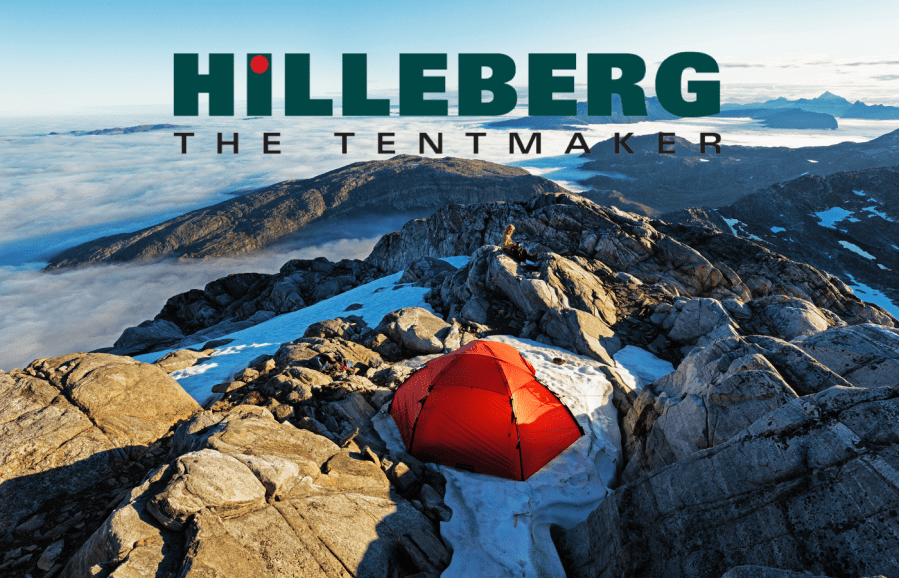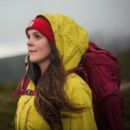This advertising feature is sponsored by our friends at Hilleberg.
Tilmann Graner has built his professional career in the arts, working as a bassoonist and photographer for Nordhausen Theater/Loh Orchestra in Sondershausen, Germany for 30 years. He has also lived a life of dedicated adventure, with 50 years of experience exploring around the globe. Tilmann, rather than seeing these parts of his life as separate, finds parallels between the two. “If you play a concert, you have to be absolutely focused on each second. If you’re crossing difficult mountains, it’s not so [different],” he says.
Main image: The Allak is both very strong and light weight, making it an excellent choice for any adventure, whether you’re traveling high up above tree line or far below it. Photo credit: Tilmann Graner / foto-tilmann-graner.de
Over years of practice, Tilmann has developed his physical and mental strengths for both his passions. He needs total control over his breath in order to play his woodwind instrument, and must have steadfast focus for climbing and long-distance treks. “It’s important also to be in good shape for bassoon playing and for climbing mountains,” he reflects.
In pursuit of adventure, Tilmann has traveled to over a dozen countries: five trips to Greenland; three to Norway and Peru; two to Nepal, India, Canada, the US and Bolivia; as well as trips to Scotland, Iceland and Turkey. “It’s important for the soul, for the brain, to get fresh air and to see that there’s something greater than you,” he says. He prefers trips in remote, rarely accessed areas far from worn-down trails. His approach to these trips is usually relaxed, despite the fact that he’s far out in the backcountry. “I don’t like to have a fixed plan where I’m forced to spend this night here and the next one there,” he says. He enjoys adapting to changes in the weather and landscapes as he goes.
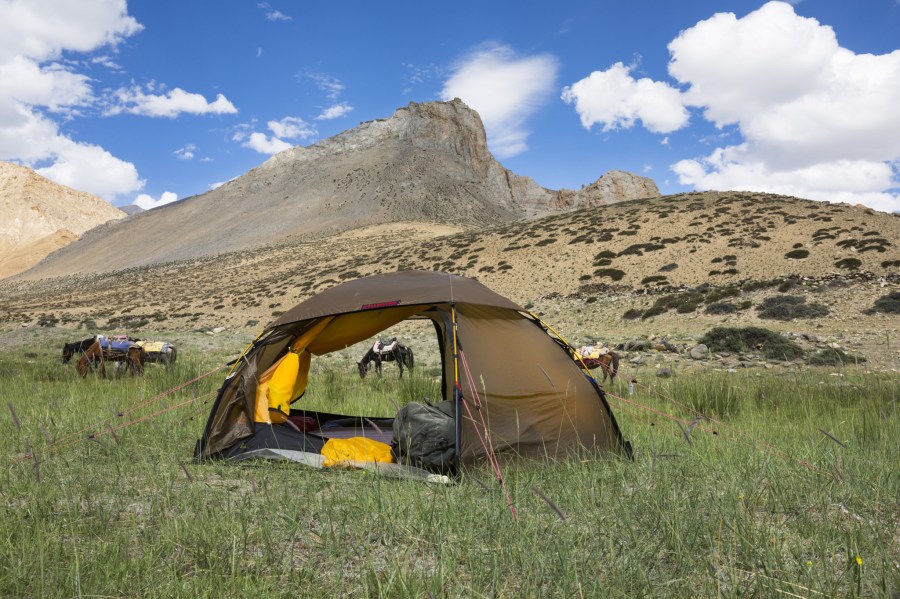
In warm climates, like here in India, the Allak’s two entrances and vestibules can be rolled away for better ventilation and views. Photo credit: Tilmann Graner / www.foto-tilmann-graner.de/
Unknown and untouched
For some of his earlier treks, he relied on documented information about routes and conditions. But during later trips, Tilmann and his partner, Susanne, with whom he does most of his journeys, began to pave their own way instead. “We did our own thing, sooner or later,” he says. For some of his trips to Greenland, Tilmann used only satellite images for reference. “There were crossings of mountain ranges, and I didn’t know of anyone who had crossed them before,” he says. “I didn’t know whether it was possible, so I just tried it.”
“[In Greenland] there were crossings of mountain ranges, and I didn’t know of anyone who had crossed them before… I didn’t know whether it was possible, so I just tried it.”
Tilmann does not explore these places to stake claim on being “the first” to do so. He does it simply because he loves to. He’s been playing in the outdoors for a long time; his first backcountry ski trip was at the age of five, and by the time he was eleven, he was climbing mountains. He’s very comfortable in the outdoors and has a good understanding of the risks, and so is always responsible in his decisions. “I’m not afraid…but I don’t take too much risk with it. I want to be sure to come back to civilization,” he says.
Traveling in untouched wilderness is compelling for him not because he’s taking risks, but because he has the opportunity to experience previously unknown and untouched places. And he gets to capture and share this through photographs. “I try not to take only postcards,” he says. He’s much more interested in capturing the true sense of a landscape rather than the most colorful or conventionally attractive photograph. “It’s more interesting if you have to look twice or a third time to see something special, to see how interesting it is,” he says.
Homes in the landscape
His tents are frequent subjects in his photos. “I like to show a little bit of our home in the landscape,” he says. He has been using Hilleberg tents for decades, because no matter where his journeys take him, he can rely on them fully. “You still feel connected with the landscape…but you feel safe,” he says. Bo Hilleberg, who also fell in love with the outdoors at a young age, built his tents precisely for adventurers like Tilmann: those who want to experience everything the outdoors has to offer without having to sacrifice safety or comfort.
Tilmann finds the all-season Red Label Allak to be “In most situations, a perfect tent.” Its fully freestanding dome construction means it can be easily pitched on any terrain, and its dual entrances and vestibules offer the utmost ease of use for traveling with his partner. “You can build up your camp on a ridge where it’s exposed on a mountain. I’m not forced to go down in the valleys and search for shelter,” he says. “That’s very important for me, to be free in the choice of the campground.”
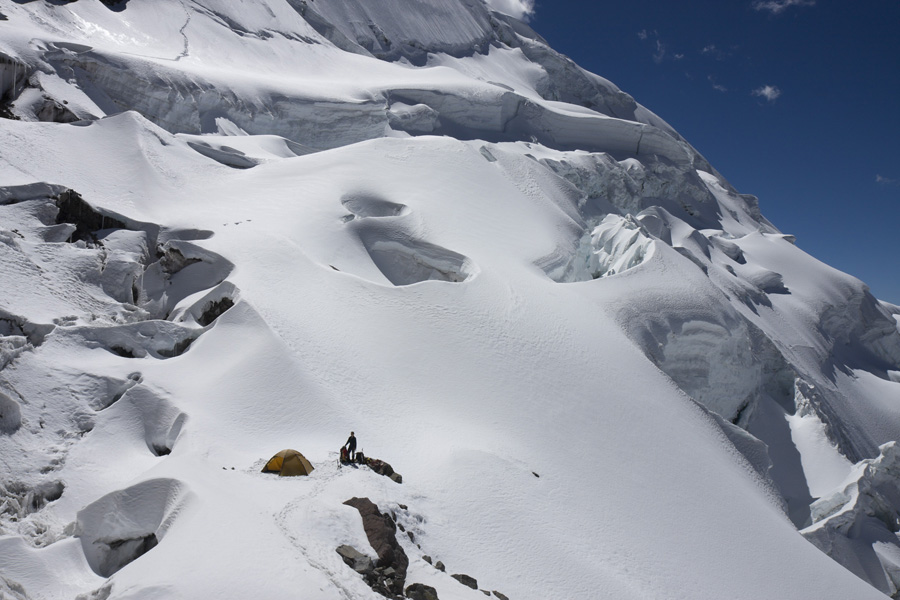
The fully freestanding Staika is one of Hilleberg’s most robust tents, meaning it can be pitched anywhere, even on exposed mountainsides. Photo credit: Tilmann Graner / www.foto-tilmann-graner.de/
Though his Allak is perfectly suited for most conditions, in harsher weather Tilmann opts for his Staika, the Allak’s Black Label sibling. It has the same fully freestanding construction but offers more space, which Tilmann values especially in snowy conditions. It swaps the Allak’s 9 mm poles for 10 mm ones and a Kerlon 1200 outer tent fabric for Kerlon 1800, making it not as lightweight as the Allak but more suited to handle the worst conditions. Tilmann favors the light weight and versatility of the Allak for most of his trips and chooses the Staika when he expects truly rough weather.
When you’re on an adventure, your tent is your home, and in both good and bad conditions, it offers sanctuary. “If you’re outside all day it’s nice to close the door for a short moment,” Tilmann says. In the outdoors, he has the opportunity to disconnect, slow down and enjoy camp life with his partner. “It’s important to see and to feel that there is something that you have to respect, like the rules and the weather, and the circumstances that you can’t change,” he says.
Focus on the journey
Tilmann has been an adventurer for nearly his entire life, and plans to continue being one. “We have become older now, of course, and perhaps the mountains have become steeper,” he jokes. But he always continues to adapt. One thing that has not changed for him over the years has been his trust in Hilleberg tents. “The things I do in the mountains, I need to have good material, good stuff, that has to work. I like to have the same things for [many] years,” he says. His wise choice in tents means gets to focus on his journey.
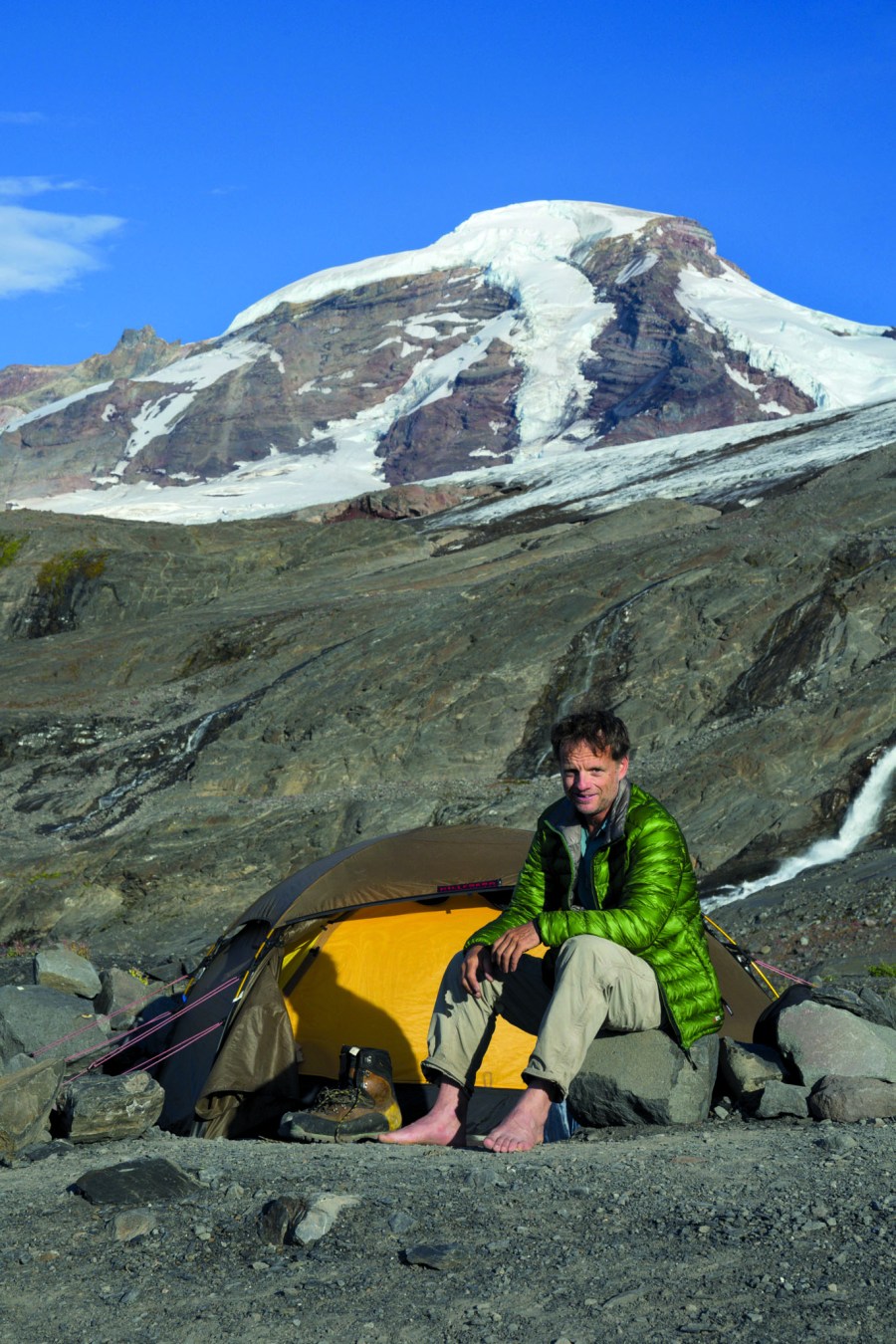
Tilmann is an adventurer, musician , photographer, and rarely (but sometimes) a model! Photo credit: Tilmann Graner / www.foto-tilmann-graner.de/
Tilmann, just like the other adventurers highlighted in this series – Emily Ford, Will Copestake and Felicity Aston – balances the things he cares about, because he recognizes the importance of making time for himself that he can just enjoy. Awards might catch more eyes, but decorating life with experiences instead of accolades, ultimately, is the most fulfilling thing any adventurer can do, at any skill level or age.

